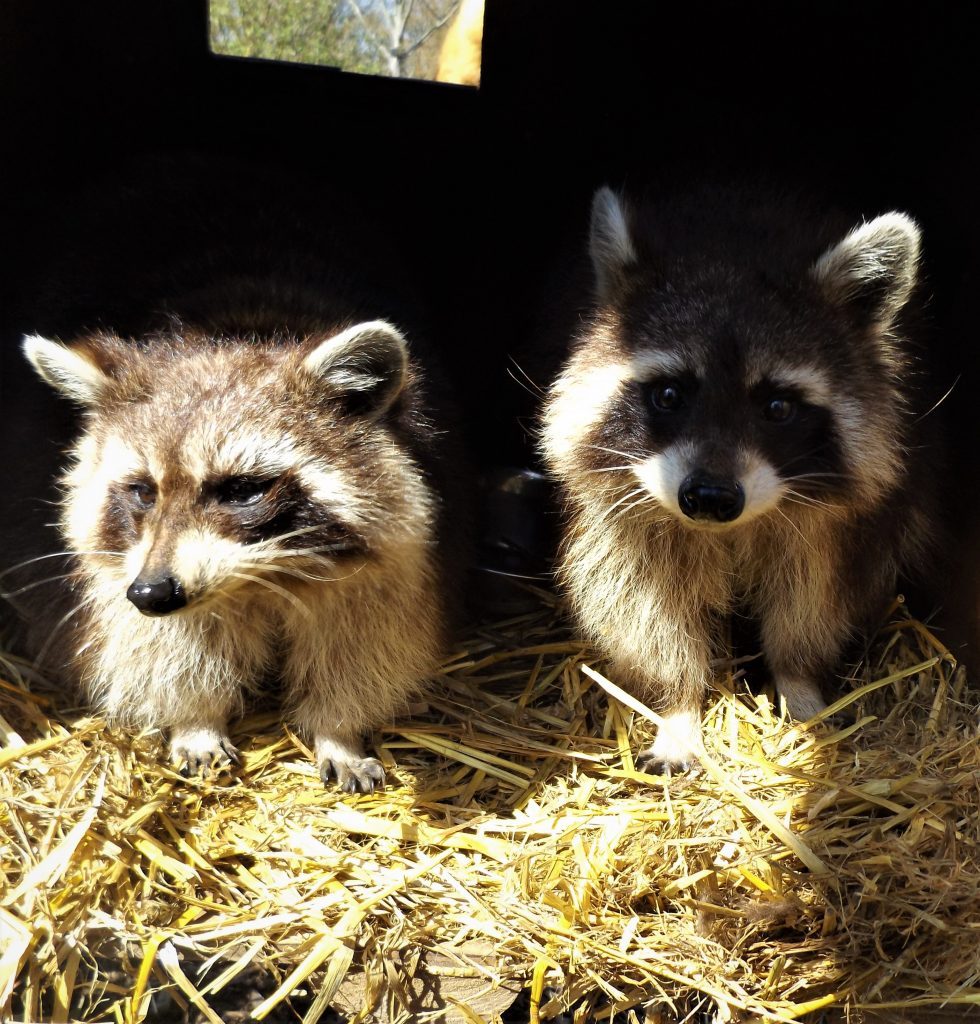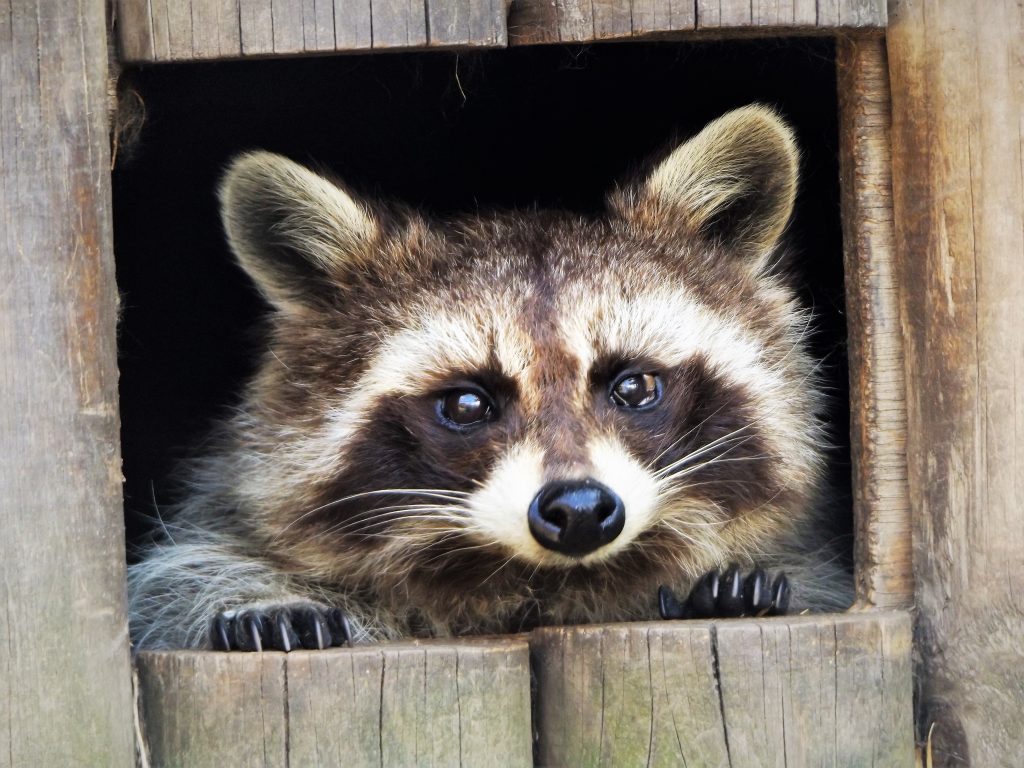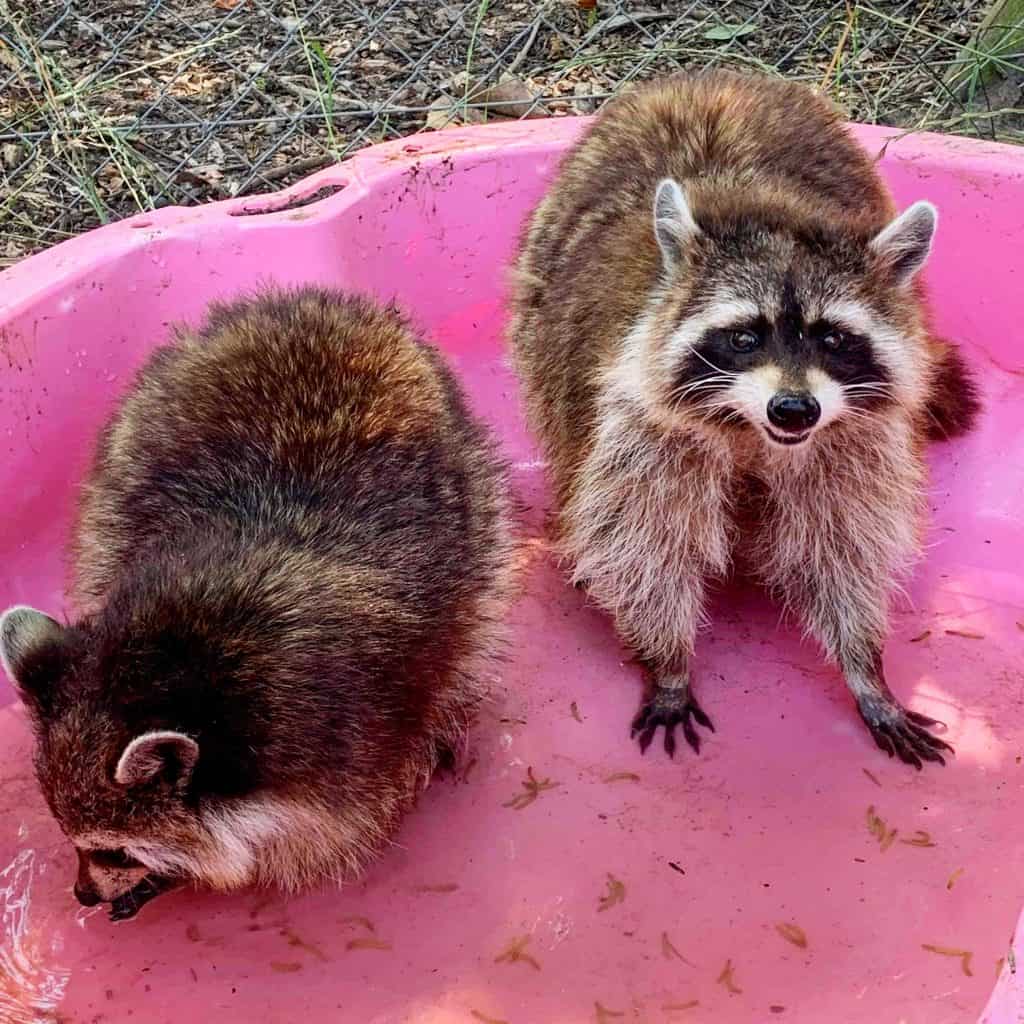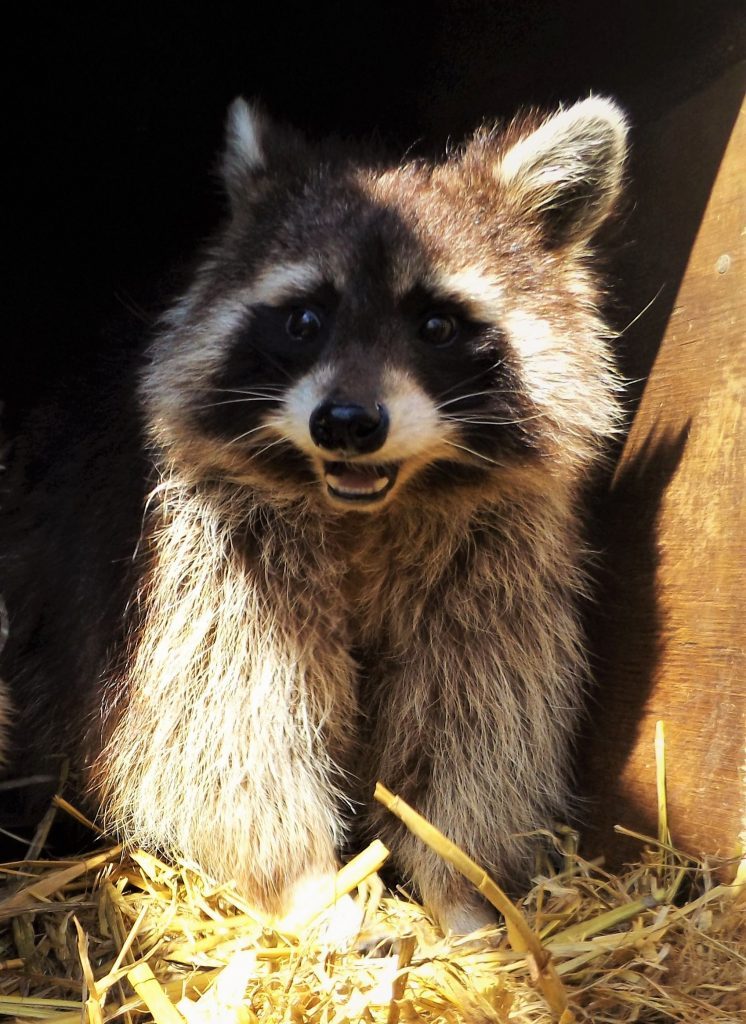This week my blog is about our two female Raccoons at the park, Poppy and Daisy. The sisters were born on 20th April 2009. Each has their own personality which makes them very unique, Daisy is very shy and will spend a lot of her time sleeping or resting inside her nest box. Whereas, Poppy is bolder and defiantly the bossier one out of the two and 100% greedier! She tends to spend more time outside and loves an afternoon snooze on one of the outside platforms.

Raccoons Procyon lotor are one of the few native animals in North America that have not been restricted by urbanisation and human development, they have adapted to living with humans. However, they are often seen as a pest to farmers but play an important role in their ecosystem. For example they help to control the rodent populations that they prey upon.
Highly intelligent and curious animals, their superior dexterity has proved no match for combination locks on dumpsters or fastened windows and they will do anything in their power to acquire food of all kinds. Their dense fur is greyish brown, and the tail has 5 -7 complete dark rings, with the tip being dark. They have bandit-like face masks and their coloration is ideal for a nocturnal species, enabling them to vanish in the darkness.

Invasive species
Our two ladies aren’t on the dating scene as Raccoons are now considered an invasive species. An invasive species can be any kind of living organism, an amphibian, plant, insect, fish, fungus, bacteria etc that is not native to an ecosystem and causes harm. They can harm the environment, the economy, or even human health. Species that grow and reproduce quickly, and spread aggressively, with potential to cause harm, are given the label “invasive”.
These furry creatures were first introduced into Germany in the 1930s. Ever since they have dispersed to every surrounding country, west to Spain, south to Italy, and east to Poland. There are other major populations in Japan, Iran and Azerbaijan. When a new and aggressive species is introduced into an ecosystem, it may not have any natural predators or controls. It can breed and spread quickly, taking over an area and the native wildlife may not have evolved defences against the invader. The direct threats of invasive species include preying on native species, outcompeting native species for food or other resources, causing or carrying disease, and preventing native species from reproducing.
To stop this from happening in the United Kingdom measures have been put into place so we don’t face the similar problems to what’s being found elsewhere around the world. If Raccoons were to escape from captive environments in the UK it could have catastrophic consequences resulting in lots of native species becoming extinct.
Although the girls are slightly lazy at times they can provide us with some wonderful behaviours that are good to watch, especially around food time you might see them washing their food before consuming it. Their Latin name “lotor” means “the washer” hence them also going by the name of “wash bears”. They are nocturnal and are rarely active during the day, however when in dire need of food, they will venture out during the daytime. Being opportunistic omnivores, they will eat absolutely anything, seeds, berries, nuts, insects, fish, eggs, carrion, small mammals, small birds, molluscs and crustaceans. They have even been known to bin raid and feast on human leftovers in the wild, but whatever is on the menu it gets a quick rinse in a nearby water!

Sadly, the species average life expectancy in the wild is sometimes only about 1 to 3 years; illnesses, accidents, and the death of the mother are the most common causes of death for young raccoons. For adults, traffic incidents and hunting account for more than 75% of deaths. Urbanization and development have been a cause for frequent encounters with this animal, and some encounters can be problematic. The majority of complaints are about female raccoons denning with her cubs in a chimney or attic. They are also primary carriers of rabies in the wild, so trying to pet them is not a good idea.



